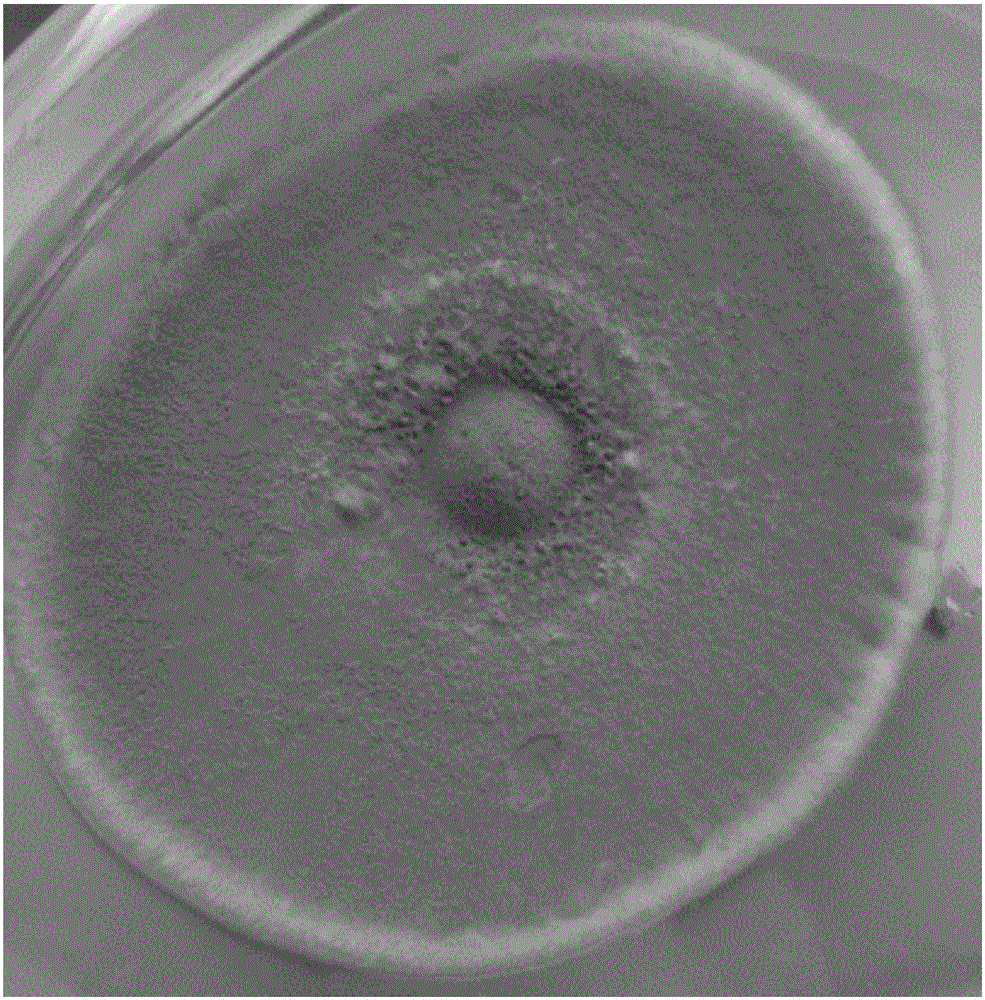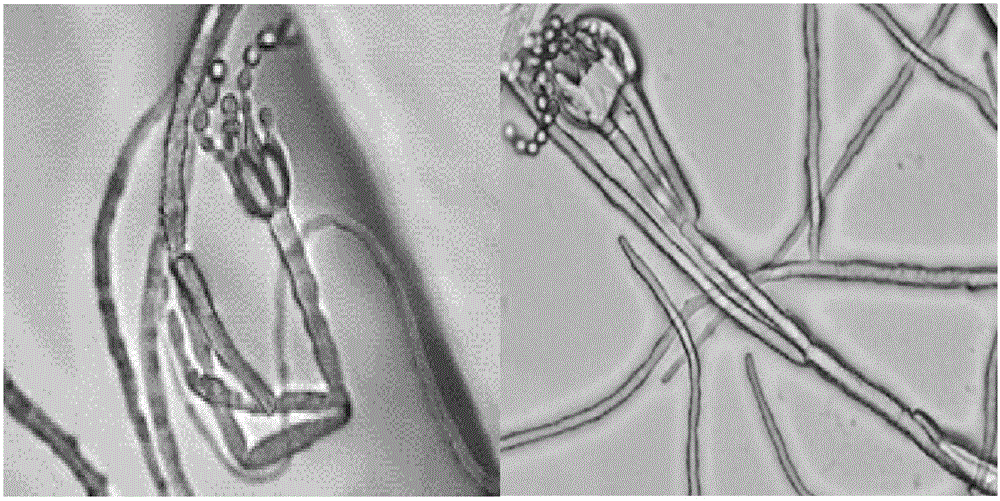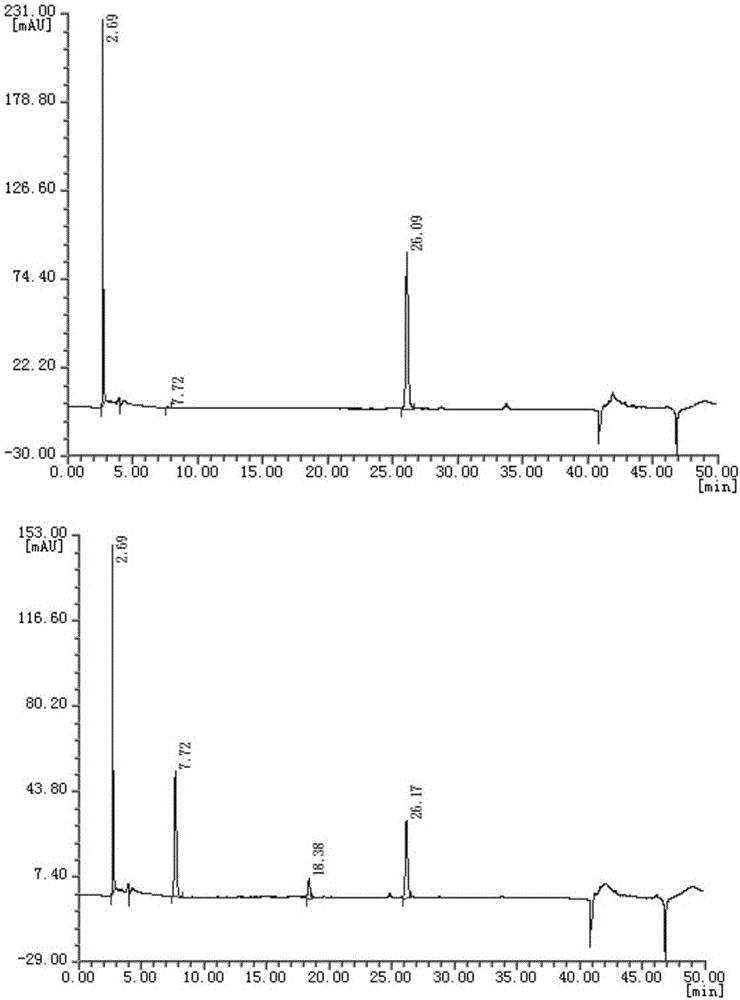Penicillium sclerotiorum and its application
A technology of Penicillium sclerotiorum and Penicillium sclerotiorum, which is applied in the directions of fungi, enzymes, biochemical equipment and methods, etc., can solve the problems of high market price, small output, limited application of tannase, etc. Effects of low tea content, low caffeine content, and high non-ester catechin content
- Summary
- Abstract
- Description
- Claims
- Application Information
AI Technical Summary
Problems solved by technology
Method used
Image
Examples
Embodiment 1
[0028] A Penicillium sclerotinum strain, said strain has been preserved in the China Center for Type Culture Collection on October 8, 2016, and the preservation number of the Penicillium sclerotinum strain is: CCTCC No: M2016543.
[0029] Among them, other reagents used in the examples of the present invention were all analytically pure.
[0030] The present invention is described in detail below in conjunction with example
[0031] The preserved penicillium sclerotiorum strain of the present invention is isolated from tea tree leaves of early Nongkang varieties. The specific separation steps are:
[0032] 1) Rinse the leaves of the tea tree with sterile water first, then soak them with 70% ethanol for 1 min, then soak them with 3.5% sodium hypochlorite for 4 min, then soak them with 70% ethanol for 30 seconds, and finally wash the leaves with sterile water.
[0033] 2) Use a sterile scalpel to cut the leaves in a symmetrical direction from left to right and cut them into ti...
Embodiment 2
[0050] An application of Penicillium sclerotinum to reduce caffeine and hydrolyze epigallocatechin gallate in the preparation of tea beverage, specifically as follows:
[0051] 1) Accurately weigh 6.000g of ground green tea sample and put it into a 500mL Erlenmeyer flask, add 200-400mL of boiling water, and extract in a boiling water bath for 45min.
[0052] 2) After the leaching is completed, immediately filter under reduced pressure while hot to obtain the green tea filtrate.
[0053] 3) After the green tea filtrate is cooled, transfer it to a 1L volumetric flask, and dilute to 1L with distilled water.
[0054] 4) Add 5 g of sucrose to each liter of tea soup, wrap it up and sterilize it at 121°C for 20 minutes. After the sterilization, green tea soup is obtained.
[0055] 5) Take the Penicillium sclerotinum strain preserved in the present invention. The strain has been preserved in the China Type Culture Collection Center on October 8, 2016. The preservation number of the P...
Embodiment 3
[0060] A kind of application of Penicillium sclerotinum in the preparation of tea beverage, specifically as follows:
[0061] 1) Add the freshly picked green tea to boiling water after drying, and extract in boiling water for 30-60 minutes.
[0062] 2) After soaking, immediately filter while hot to obtain green tea filtrate.
[0063] 3) adding sucrose or glucose to the green tea filtrate, high temperature sterilization, and after the sterilization, green tea soup is obtained.
[0064] 4) Take the Penicillium sclerotinum strain preserved in the present invention. The strain has been preserved in the China Type Culture Collection Center on October 8, 2016. The preservation number of the Penicillium sclerotinum strain is: CCTCC No: M2016543, Place in PDA medium for activation to obtain activated Penicillium sclerotiorum, and prepare it into 1.0×10 6 ~1.0×10 8 CFU / mL Penicillium sclerotiorum suspension.
[0065] 5) Inoculate the suspension of Penicillium sclerotiorum into the ...
PUM
 Login to View More
Login to View More Abstract
Description
Claims
Application Information
 Login to View More
Login to View More - R&D
- Intellectual Property
- Life Sciences
- Materials
- Tech Scout
- Unparalleled Data Quality
- Higher Quality Content
- 60% Fewer Hallucinations
Browse by: Latest US Patents, China's latest patents, Technical Efficacy Thesaurus, Application Domain, Technology Topic, Popular Technical Reports.
© 2025 PatSnap. All rights reserved.Legal|Privacy policy|Modern Slavery Act Transparency Statement|Sitemap|About US| Contact US: help@patsnap.com



